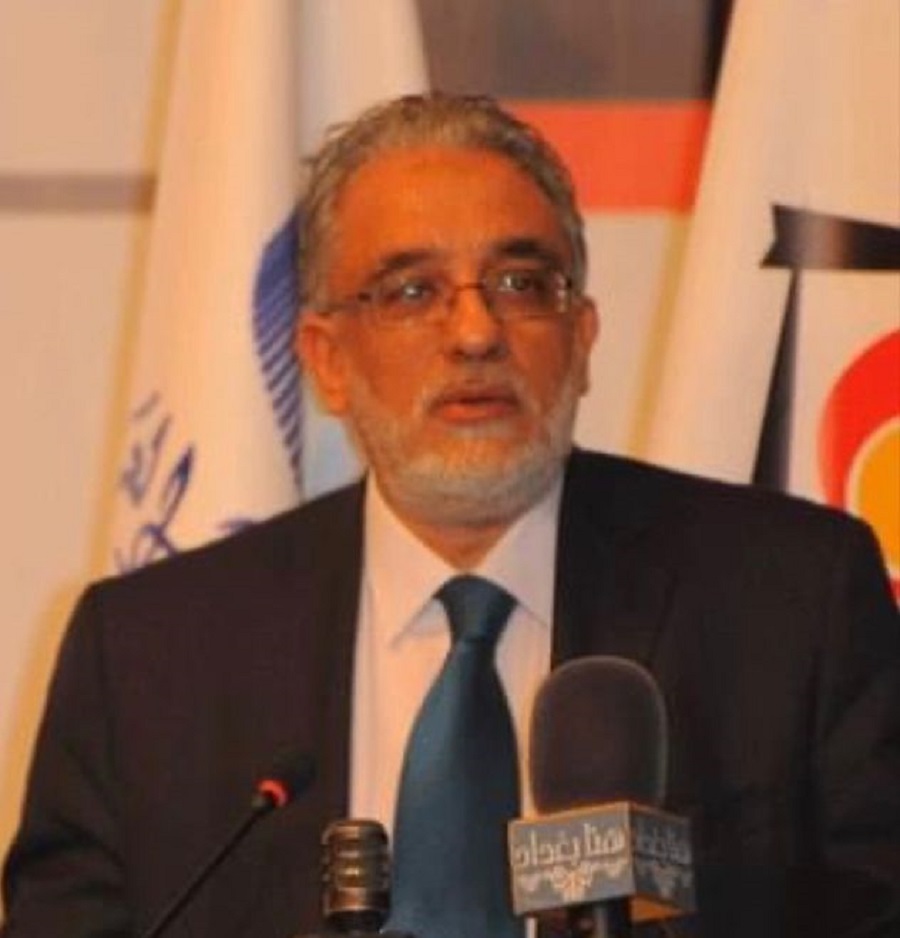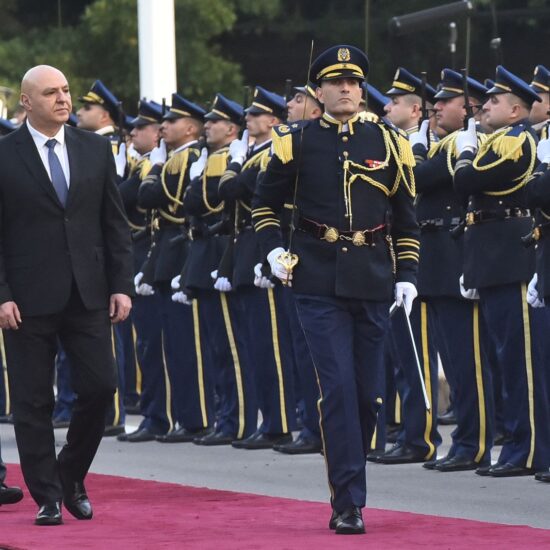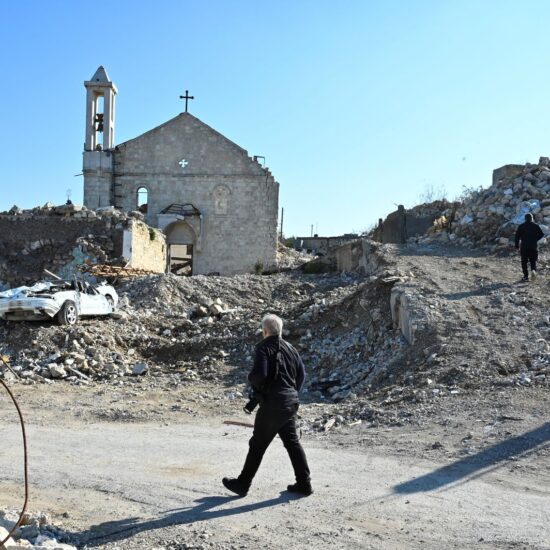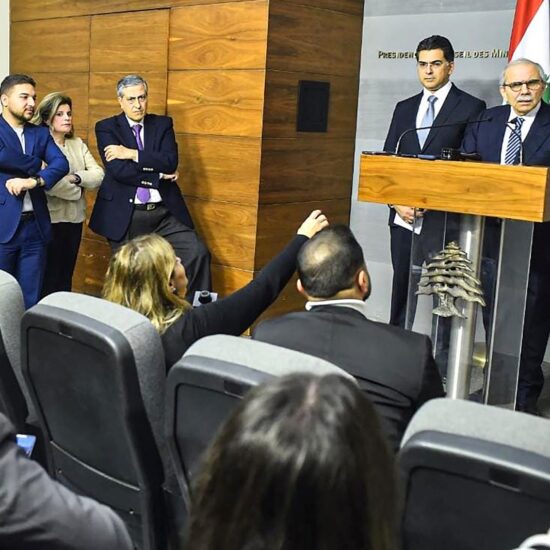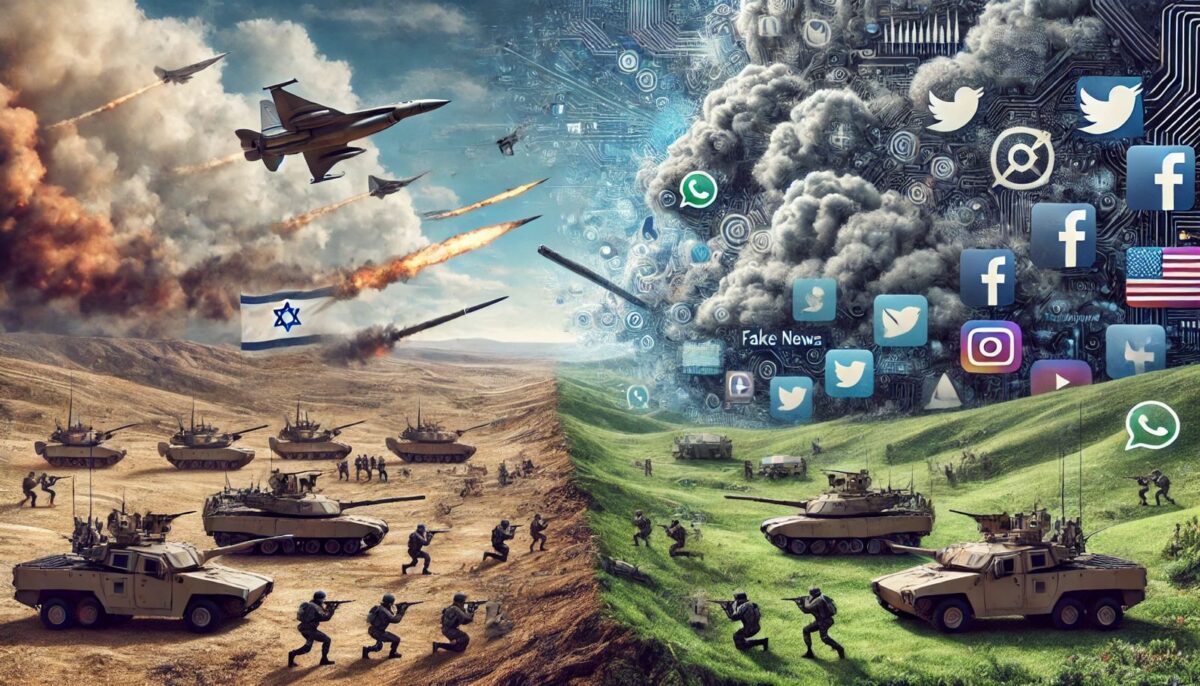
The ongoing conflict between Israel and Lebanon has not only manifested in traditional military confrontations but has also extended into the digital realm, particularly through social media platforms like WhatsApp and social media platforms. This analysis explores the dynamics of these digital battlegrounds, focusing on the use of WhatsApp groups for propaganda, misinformation, and cyber warfare tactics, including account hacking from both sides.
The rise of fake news during the Israel-Lebanon conflict illustrates the complexities of modern information warfare. With significant statistics indicating widespread misinformation across various platforms, it is clear that both sides leverage social media as a tool for propaganda and psychological warfare.
As conflicts evolve in an increasingly digital landscape, understanding these dynamics becomes crucial for navigating information in times of crisis. Efforts to combat misinformation must be prioritized to ensure that accurate information prevails over falsehoods that can exacerbate tensions and hinder effective responses during conflicts. For example Israeli officials have engaged in spreading misinformation, exemplified by a claim from Ofir Gendelman, spokesperson for Prime Minister Benjamin Netanyahu. He shared a video purporting to show Palestinians faking injuries for cameras, labeling it “Pallywood.” However, this video was revealed to be behind-the-scenes footage from a Lebanese film and was debunked by various sources. The attempt to frame Palestinians as deceitful actors seeking to manipulate international opinion illustrates how fake narratives can be weaponized in media.
A study by Cyabra, an Israeli social media intelligence company, indicated that on the day following the October 7 attacks by Hamas, one in four posts about the conflict on platforms like Facebook, Instagram, TikTok, and X (formerly Twitter) originated from fake accounts. This statistic underscores the extent to which misinformation permeated social media during critical moments of the conflict.
The New York Times described Hamas’s media strategy as employing a “broad, sophisticated” approach that included using bot accounts to spread graphic and emotionally charged propaganda. This strategy was aimed at shaping narratives to garner international sympathy and support. The analysis indicated that misinformation was not just a byproduct of the conflict but a tactical element used to influence public opinion both locally and internationally.
According to The Intercept, Israel’s Ministry of Diaspora Affairs allocated about $2 million for a campaign aimed at shaping public perception following the October 7 attacks. This campaign involved using political marketing firms to flood social media with specific narratives intended to dehumanize Palestinians and promote Israeli actions as justified. The report emphasized that this effort was part of a broader information warfare strategy designed to manipulate public discourse.
A report by Haaretz highlighted issues with Israeli claims regarding civilian casualties during military operations. For instance, the analysis found that claims about “beheaded babies” circulated by Israeli officials were based on unverified sources and lacked credible evidence. Journalists from Haaretz traced the origins of these claims and concluded they were false, reflecting how misinformation can escalate tensions and distort public understanding of events.
A study published by The Financial Times analyzed a bombing incident involving civilians evacuating Gaza City. The report noted that while the Israeli Defense Forces (IDF) blamed Palestinian militants for the attack, most explanations aside from an Israeli strike could be ruled out. This discrepancy highlights how conflicting narratives can emerge during military operations, complicating efforts to ascertain the truth.
An article from Libnanews discussed how psychological warfare tactics were employed alongside misinformation strategies during the conflict. The IDF’s use of evacuation orders broadcasted via social media aimed to create fear among civilians in Lebanon, forcing them to leave their homes under threat of imminent attacks. This tactic not only destabilized communities but also served as a means to weaken support for Hezbollah.
Reports indicated that Lebanese journalists critical of Hezbollah faced coordinated disinformation campaigns on social media platforms following military actions that resulted in civilian casualties. Many accounts targeted these journalists with accusations of collaboration with Israel, utilizing fake accounts and trolls to incite fear and silence dissenting voices. This campaign exemplified how misinformation can be weaponized against individuals who challenge dominant narratives.
Notable Telegram Accounts Spreading Propaganda
Hezbollah’s Military Media Unit official channel disseminates narratives that support Hezbollah’s actions and frame the conflict in a way that aligns with their political objectives. They share videos, images, and statements that highlight their military operations and portray Israel negatively.
Al-Qassam Brigades military wing of Hamas has a prominent presence on Telegram, with their channel reportedly having around 200,000 followers. They use this platform to issue statements and share updates about their military actions against Israel, often framing them as resistance efforts.
Resistance News Network (RNN) radical anti-Zionist channel promotes violence against Israel and has over 165,000 subscribers. RNN shares content from designated foreign terrorist organizations, including Hamas and Hezbollah, featuring propaganda and graphics related to armed conflict.
Palestinian Islamic Jihad (PIJ) channels associated with PIJ share updates on their military activities and propaganda aimed at rallying support for their cause. These channels often post graphic content showcasing attacks on Israeli targets.
Anti-Israel Propaganda unofficial channels exist that spread misinformation about Israeli military actions, often using emotionally charged language and manipulated images to provoke outrage among viewers.
Hezbollah’s use of Telegram for communication is significantly enhanced by the platform’s encryption features, which provide several advantages that are crucial for the group’s operational security and propaganda efforts.
Telegram offers end-to-end encryption for its secret chats, ensuring that messages can only be read by the sender and the recipient. This feature is vital for Hezbollah, allowing them to communicate sensitive information without the risk of interception by Israeli intelligence or other adversaries.
Telegram allows users to remain relatively anonymous, which is appealing for groups like Hezbollah. This anonymity helps protect the identities of operatives and supporters, making it harder for authorities to track their communications
The Digital Battlefield: WhatsApp as a Tool for Conflict
WhatsApp has emerged as a significant platform for communication during conflicts, providing a space for both information dissemination and mobilization.
Group Dynamics: In the Israel-Lebanon context, both sides utilize WhatsApp groups to share updates, coordinate actions, and spread narratives that support their respective causes. For instance, pro-Israeli groups may share news about military successes or humanitarian efforts, while pro-Hezbollah groups might focus on resistance narratives and calls to action.
Both sides engage in misinformation campaigns to sway public opinion. For example, during recent escalations, fake news regarding military operations or civilian casualties has circulated widely on WhatsApp. This misinformation can lead to heightened tensions and exacerbate conflicts.
The use of WhatsApp for psychological operations is notable. Both sides aim to demoralize the opponent by spreading rumors about military failures or civilian unrest. This tactic can undermine morale and create an atmosphere of fear
During the recent Israel-Hezbollah conflict, various instances of fake news and misinformation have circulated, impacting public perception and escalating tensions. Here are some notable examples:
Examples of Fake News
Following an attack on the village of Majdal Shams, Israel blamed Hezbollah for the incident, claiming it involved an Iranian rocket. However, Hezbollah categorically denied responsibility. This misinformation contributed to escalating military actions by Israel in Lebanon, framing the narrative to justify their strikes. Also on October 6, 2023, Israeli commentator Eddy Cohen shared a photo purportedly showing a Hezbollah tunnel in Beirut. The image was later revealed to be from 2019 and taken in Israel, yet it was widely shared, reinforcing fears about Hezbollah’s presence in urban areas. In a separate incident on October 1, 2023, the Israeli military claimed to have conducted a ground invasion into southern Lebanon. This assertion was quickly refuted by both Hezbollah and UNIFIL, highlighting it as an attempt to demoralize the Lebanese population amid ongoing airstrikes. Following the October 7 attack by Hamas on Israel, various unverified claims circulated about beheaded children. Major outlets like CNN found no evidence to support these claims, which were propagated by Israeli officials and media . This misinformation fueled outrage and further escalated tensions. The cyberwarfare has also psychological warfare tactics. Reports indicated that residents in southern Beirut received threatening calls warning them of imminent bombings if they continued supporting Hezbollah. These tactics aimed to instill fear and disrupt social cohesion
Examples of Fake Pictures and Misinformation
A widely shared image purportedly showing the aftermath of a Hezbollah attack on Israel’s Ramat David airbase was later identified as AI-generated. The image featured visual distortions and unreadable text, revealing it as a fabrication rather than an authentic depiction of an attack There were also misrepresented drone strike footages. A video claiming to show a Hezbollah drone strike on an Israeli military installation was actually footage from a Ukrainian drone attack on a Russian oil refinery. This misinformation was circulated widely, misleading viewers about the nature of the conflict Images depicting casualties were shared with claims that they were from recent attacks. However, many were found to be from earlier conflicts or unrelated incidents, such as natural disasters or other wars, further muddying the narrative surrounding casualties in the current conflict. Some images circulated during this period were identified as originating from different conflicts altogether. For instance, photos from the Syrian civil war or even unrelated events like celebrations in Algeria were falsely linked to the Israel-Hezbollah war. Various posts claimed that individuals shown in distressing images from Gaza were “crisis actors” hired to fabricate scenes of violence. These claims often lacked credible evidence and were based on misinterpretations or out-of-context footage
Manipulated Videos claimed to show a dead child coming back to life during an air raid was debunked as old footage that had been circulating since at least 2020, demonstrating how misinformation can be repurposed to fit new narratives. On October 6, 2023, an Israeli commentator shared a photo allegedly taken in a Hezbollah tunnel, which turned out to be an old image from 2019 taken in Israel. This post quickly gained traction and reinforced unfounded fears about Hezbollah’s presence in Lebanese neighborhoods
Examples of Misinformation and Propaganda
i24NEWS Israeli news outlet has been criticized for disseminating unverified claims regarding atrocities committed by Hamas, including reports of beheaded children. Despite the lack of evidence, these claims gained traction on social media, amplifying fears and justifying military actions. Newsmax a conservative broadcaster, Newsmax aired segments suggesting that images of Palestinian casualties were staged by “crisis actors.” This narrative downplayed the humanitarian crisis in Gaza and aimed to discredit the authenticity of reports coming from the region. Fox News has faced scrutiny for airing misleading reports that mischaracterized events on the ground. For instance, they shared footage that was later debunked as being from previous conflicts or unrelated incidents, presenting them as current events related to the Israel-Hezbollah war. Al Jazeera is providing critical coverage of Israeli actions, Al Jazeera has also been accused of bias in its reporting. Some segments have been criticized for lacking context or failing to verify claims made by sources, leading to accusations of propagating misinformation.
Russian State Media (RT and Sputnik) outlets have engaged in disinformation campaigns aimed at undermining Israel’s position while promoting narratives favorable to Hezbollah. They have used fabricated stories and manipulated images to sway public opinion against Israel. Social Media Influencers on platforms like TikTok and Instagram have shared misleading videos claiming to show real-time events from the conflict. For example, a video purporting to show Hamas fighters parachuting into Israel was actually old footage from a different event entirely
The Digital Battlefield: Twitter as a Tool for Conflict
Twitter has emerged as a critical platform for disseminating information during conflicts. It serves as a space for both sides to share updates, mobilize support, and spread narratives that align with their respective causes. Many accounts actively promote Israel’s military actions and humanitarian efforts. For example @IDF official account of the Israel Defense Forces shares real-time updates about military operations and provides context to their actions @Israel: This account disseminates news related to Israel’s international relations and public diplomacy efforts. Conversely, Hezbollah supporters use Twitter to promote resistance narratives. Accounts such as @AlManarTV official channel of Hezbollah shares news and updates that emphasize their perspective on the conflict. @Hizbollah account posts content aimed at rallying support for Hezbollah’s actions against Israel. Both sides engage in misinformation to sway public opinion. For instance during recent escalations, accounts like @hansterho247 were identified as part of a network spreading false information about military operations and civilian casualties, contributing to heightened tensions. The conflict has also seen a rise in cyber attacks targeting social media accounts, with both sides employing hacking tactics to gain an advantage.
Notable Hacking Examples
In US Central Command (CENTCOM) notable incident, CENTCOM’s Twitter account was hacked by the group “CyberCaliphate,” which supported ISIS. They posted threatening messages against American soldiers and released documents via the account, although none contained classified information. This incident highlights how military accounts can be targeted during conflicts, potentially impacting international perceptions. The Syrian Electronic Army (SEA) group has a history of hacking social media accounts linked to Western interests. In early 2014, they hacked Skype’s social media accounts to spread messages related to U.S. surveillance programs revealed by Edward Snowden. Hezbollah Cyber Operations reports indicate that Hezbollah has attempted to hack Israeli military accounts to gather intelligence or spread disinformation. In one case, hackers gained access to an Israeli officer’s social media account, posting false information about troop movements. For example accounts like @RebelTaha have been observed using similar language and hashtags within a short time frame, suggesting coordinated efforts to amplify specific narratives. Some accounts have posted contradictory content that raises questions about their motives. For instance the account @hansterho247 posted both inflammatory jokes about Israeli weapons and calls for peace within hours of each other, indicating a strategy aimed at creating confusion rather than promoting coherent messaging.
Influential Accounts in the Conflict
Several Twitter accounts have emerged as influential voices in the discourse surrounding the Israel-Lebanon conflict: @CNNbrk (CNN Breaking News): With over 63 million followers, this account provides real-time updates on global events, including the Israel-Lebanon conflict. @BBCBreaking (BBC Breaking News): Another major source for breaking news with over 51 million followers. @WarMonitors: An account focused on geopolitical news with over 766k followers, often providing updates from conflict zones.@sentdefender: Known for sharing open-source intelligence related to conflicts; it has gained popularity since the recent escalations.
Accounts belonging to Israeli government officials frequently share updates regarding military operations and diplomatic efforts. Palestinian officials also use Twitter to communicate their positions and garner international support.
Examples of TikTok Accounts Spreading Fake News
@HamasMedia account has been known to share misleading videos purportedly showing Israeli military actions, often using old footage from unrelated conflicts. For example, it circulated a video claiming to show an Israeli airstrike that was actually from a previous war in Syria. @PalestineUpdates account posted a video suggesting that Palestinian civilians were faking injuries during airstrikes. The footage shared was later identified as being from a 2017 makeup tutorial, misleading viewers about the current humanitarian crisis. @TruthAboutIsrael account has shared manipulated images claiming to depict the aftermath of Israeli attacks on Gaza. Some images were found to be AI-generated or taken from unrelated incidents, contributing to misinformation about civilian casualties. @IsraeliDefense this account claims to provide updates on Israeli military operations, it has been criticized for spreading false narratives about Hezbollah’s actions, including exaggerated claims of their capabilities and civilian casualties inflicted by them. @WarInTheMiddleEast account frequently posts videos that misrepresent events on the ground, such as claiming that Hamas fighters used paragliders to infiltrate Israel—an assertion that was debunked by fact-checkers. Many of these accounts utilize emotionally charged content designed to provoke outrage or sympathy, making it more likely for viewers to share the misinformation. Some accounts are suspected of being bots or automated profiles that amplify divisive narratives without genuine human oversight. Numerous videos circulating on TikTok are edited or taken out of context to fit specific narratives, often lacking proper sourcing or verification
Examples of YouTube Channels Spreading Fake News
Maram Susli a Syrian YouTuber known for promoting conspiracy theories, Susli has shared misleading footage claiming it shows Israeli military helicopters attacking civilians during the October 7 attack. The footage was later identified as being from Israeli operations against Hamas positions days later. The Grayzone channel often presents itself as an independent news outlet but has been criticized for spreading false narratives about the conflict. For instance, it has shared unverified claims regarding civilian casualties and misrepresented events to frame Israel in a negative light. RT (Russia Today) while not exclusively focused on the Israel-Palestine conflict, RT has been implicated in disseminating propaganda that downplays Hamas’s actions and exaggerates Israeli military responses, contributing to a skewed narrative. PressTV Iranian state-funded channel has been known to share misleading information about the conflict, including exaggerated casualty figures and unverified claims of Israeli atrocities. Al Jazeera English generally regarded as a reputable source, some segments have faced criticism for lacking context or failing to verify claims made by sources, leading to accusations of propagating misinformation.
The Israel-Lebanon conflict illustrates how modern warfare extends beyond traditional battlefields into digital spaces like Twitter. The dynamics surrounding misinformation campaigns, propaganda efforts, and hacking incidents highlight the complexities of contemporary conflicts in an interconnected world. As both sides continue to leverage social media platforms for strategic advantages, understanding these dynamics will be crucial for stakeholders involved in these conflicts.
Maan Barazy is an economist and founder and president of the National Council of Entrepreneurship and Innovation. He tweets @maanbarazy.
The views in this story reflect those of the author alone and do not necessarily reflect the beliefs of NOW.


